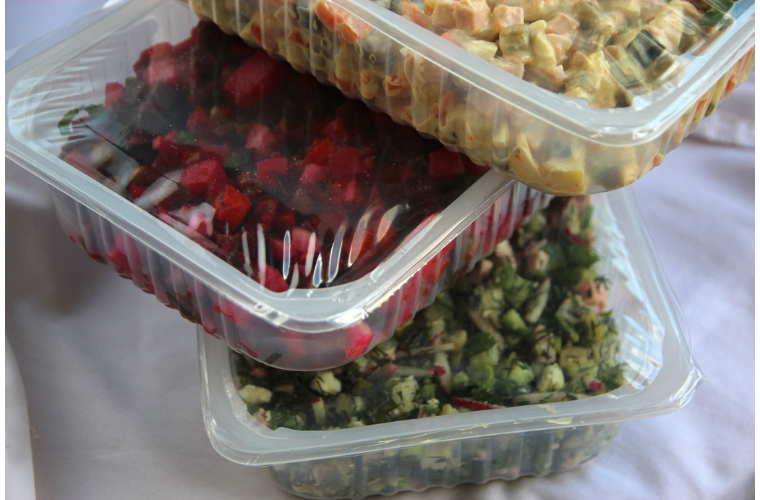Supagas MAP gases assist businesses with their food products to extend shelf life and freshness
Gas at food-grade level for processing and packaging purposes in the food and beverage industry is important to preserve food quality and extend shelf life. Food & Beverage Industry News reports.
Food grade gas is important for the food processing and packaging industry. The gas used is to help keep food fresh for a longer period and assist food quality for manufacturers.
Supagas, as a business has worked in the Australian gas industry since 1968 and continues to work with a range of food and beverage businesses offering Specialty and Industrial gases. Supagas’ state-of-the-art facilities allows them to offer multiple gas types and gas products, as well as manage a specialised NATA Accredited laboratory to blend and test specialty gas mixtures.
George Elhlou, National Specialty Gases Manager at Supagas, said Supagas is exhibiting at AUSPACK 2022, as the show will provide wide ranging access to emerging technologies within the food industry with continued development as more businesses use Modified Atmosphere Packaging (MAP) gases for food production.
An important area of application is MAP, known at Supagas as the SupaMap product range available in cylinder, pack and bulk form. The gas mixture is selected to help improve the conditions and spoilage, individually for various products.
“Supagas’ extensive experience and knowledge in food gas applications and processing, including packaging is focused direct to the customer. Allowing the food packaging, original equipment manufacturers (OEMs) to focus on their scope of work. Whilst leaving the total MAP gas supply system solution in the hands of Supagas, where customer satisfaction and support is paramount,” George highlights.
“To investigate and liaise with food equipment packaging OEMs will allow us to help equipment manufacturers and their customers on the set up and installation of appropriate MAP gas cylinder and bulk supply modes. MAP tends to be a combination of carbon dioxide, nitrogen and oxygen mixtures, as each product will determine the mixture of gas required,” expresses Elhlou.
“Nitrogen and carbon dioxide are the dominant gases used. It’s about ensuring we do enough experimental work with the client to determine what is the most efficient mixture for their product,” explains Elhlou.
For food packaging customers and equipment manufacturers, Supagas are here to help with gas supply and application of MAP gases. As gas specialists, Supagas’ knowledge of gases is to help manufacturers with the most appropriate gas mixture that will provide the greatest possible solution to meet the customers’ product requirements.
MAP gas machines will flush oxygen out of the packaging to inject the required gas (i.e. pure or mixture gas), prior to sealing. The objective is to ensure the product quality and shelf life, thereby providing manufacturers with the greatest opportunity for markets, domestic and further abroad.
“There are specific food packaging machines and there are different types and designs for different products,” said Elhlou. The most common machine for this is tray sealing, but it could vary and be in any form.
For customers’ who contact Supagas, it is not simply for expertise in the application of gas, it is also how Supagas can assist with a company to grow.
David Petroff, National Industrial Bulk Manager at Supagas, said one of our critical roles is to work with customers to pick the best type of solution for them.
“If you can imagine, a customer has an idea of what they want but we can help them sharpen the focus of what will work best for them,” expresses Petroff.
“The concept of small, medium and large customers is very important to be able to pick an appropriately sized tank, for example, for packages they use to do gas flushing, tray sealing, MAP packaging, carbonation and so forth,” highlights Petroff.
“It is important that you size something that not only suits the clients’ budget, but also what they are trying to achieve. But you then might get to a point where cylinders are not efficient or appropriate for the required output and that is where bulk systems come into the equation,” Petroff explains.
It is important to understand and be mindful of the customers efficiency level for the size of the business, that is one of the main reason’s customers come to Supagas, the level of knowledge, expertise and specialisation.
“As a consumer you want something that looks and is fresh,” Petroff said.
“When things like meat or potato chips, for example are being packaged and distributed domestically, it isn’t so critical. But if any company wants to export something then shelf life needs to be extended to six or even twelve months because it may not get on the shelf for three months.”
The development of technology and food production, Elhlou further highlights is the rapidly growing ready meals market, where further growth is expected in the coming years. The COVID-19 pandemic and advancements in packaging technology, has played a major role in the growth of the ready meals market, Petroff believes.
It is important to understand frozen meals have a longer shelf life compared to ready-to-eat meals which have a shorter shelf life. The use of MAP gas it to help assist in the preservation of food freshness and prevent perishability without freezing, even if heating is required you will then have a fresh meal to consume.
The growth of the food and beverage processing and packaging industry is evident. The advancements of technology in the industry will assist the processing and packaging industry to extend the quality and shelf life of products. The appropriate set up and installation of equipment accompanied by the correct MAP gas solution for packaging is important to provide positive outcomes and results.
To find out more about Specialty and Industrial Bulk Gases contact the Supagas Gas Professionals.


 Instagram
Instagram